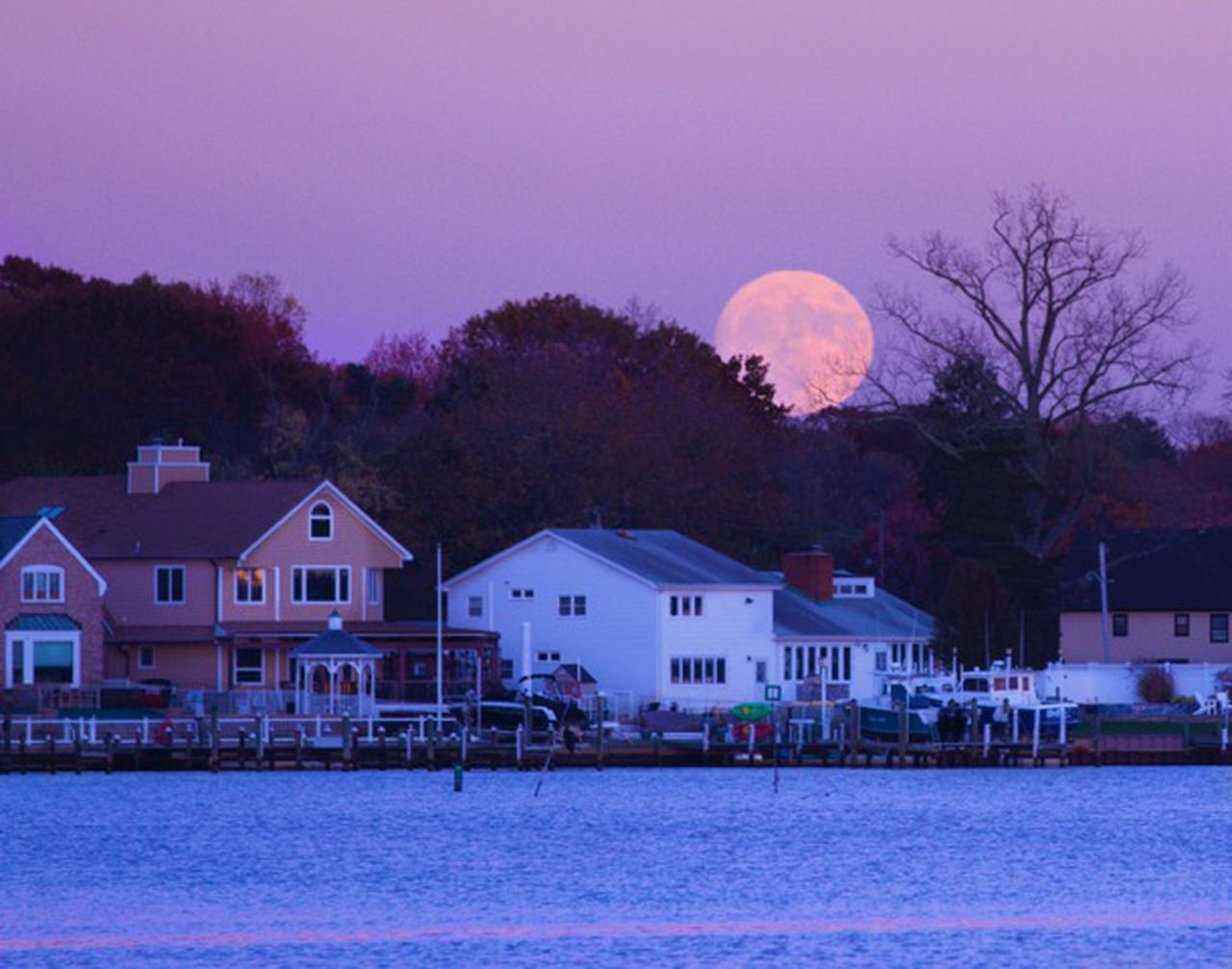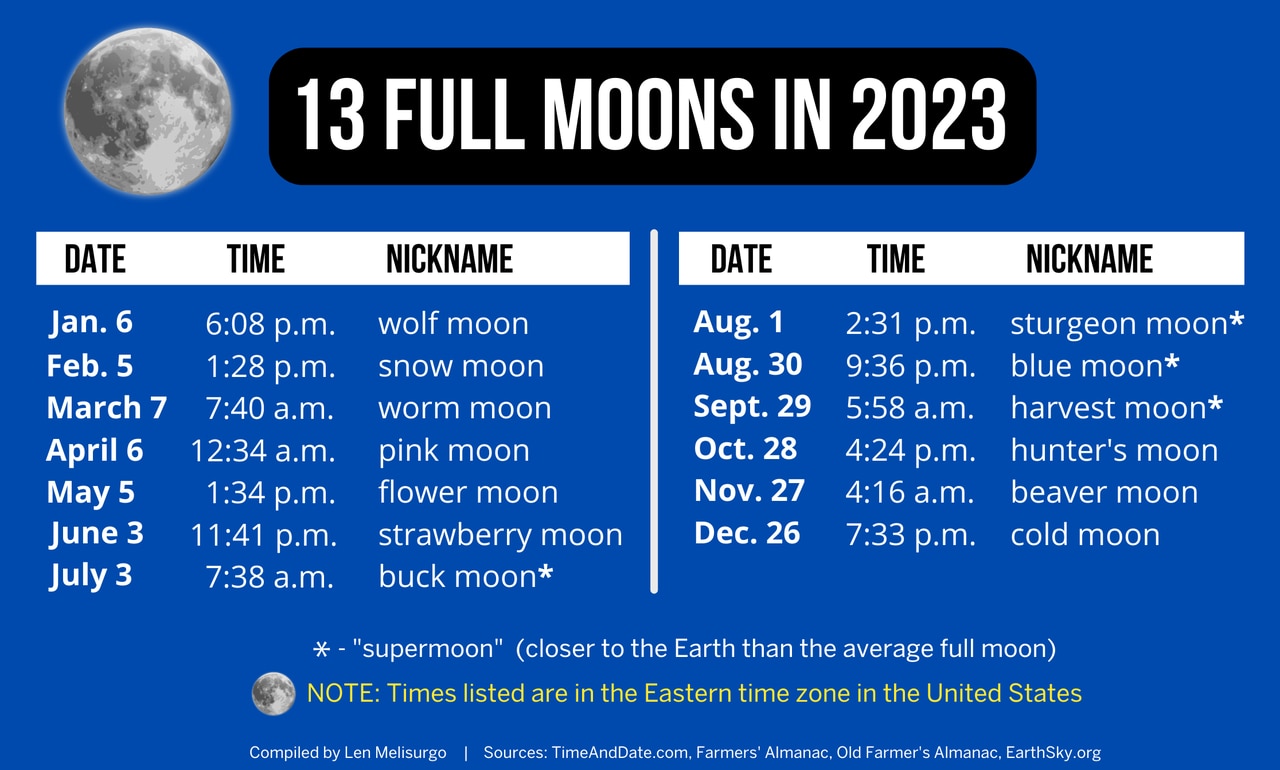13 full moons, including 4 supermoons and a blue moon, will shine in 2023 – NJ.com
Sky watchers will get an extra treat in 2023, with 13 full moons on tap, including four big “supermoons” and one “blue moon.” There’s also a partial solar eclipse coming in the new year, but that will have limited visibility in the eastern United States.
A more significant solar eclipse will occur in April 2024, and it has already been nicknamed the Great American Eclipse of 2024.
As for 2023, astronomy experts say four supermoons will be shining in the sky this year, and one month — August — will have two full moons, making the second one a “blue moon” (the second of two full moons during the same month). On average, a blue moon occurs every two to three years, because the lunar phases take 29.5 days to complete. So on occasion, two full moon cycles will occur during one 30- or 31-day month on the calendar.

Experts say four “supermoons” and one “blue moon” will be among the 13 full moons shining in the night sky in 2023. Pictured is a supermoon that was rising above houses in Ocean County in 2016.Courtesy of Teri Abramson
What is a supermoon?
Supermoons are moons that become full when their orbits are closer than average to the Earth — making them appear to be slightly bigger and as much as 30% brighter than ordinary full moons, especially when they begin to rise.
Although the precise definition varies in the astronomy world — and some experts say the average star gazer won’t notice the size and brightness difference — many say a supermoon is a moon that tracks less than 223,000 miles from the Earth during its full phase. (Some say any full moon that is 226,000 miles or closer to the Earth can be classified as a supermoon, and others set the cutoff at the precise distance of 223,694 miles.)
And some, like prominent astronomer Fred Espenak, use a special formula to calculate the “relative distance” of the moon when it reaches its closest point of orbit. Based on the relative distance, two major astronomy websites — EarthSky.org and Astropixels — say there will be four supermoons in 2023.
Regardless of the exact definition, astronomy experts seem to agree that the closest full moon of the year will be the Aug. 30 “blue moon,” so many sky observers will likely be calling that a “super blue moon” or a “blue supermoon.”

These are the dates and times of each full moon coming in 2023, along with their most common nicknames. An asterisk indicates the moon will be a “supermoon,” a full moon that appears to be slightly bigger and brighter than an average full moon.Len Melisurgo | NJ Advance Media for NJ.com
Dates, times, nicknames of full moons in 2023
In case you want to do some sky watching or photo snapping, here’s a list of the dates and times of each full moon appearing in 2023, along with their most common nicknames. (Special thanks to the Farmers’ Almanac, the Old Farmer’s Almanac, TimeAndDate.com and EarthSky.org for the details.)
Note: Times listed below are for the Eastern time zone.
- Jan. 6 at 6:08 p.m. — “wolf moon”
- Feb. 5 at 1:28 p.m. — “snow moon”
- March 7 at 7:40 a.m. — “worm moon”
- April 6 at 12:34 a.m. — “pink moon”
- May 5 at 1:34 p.m. — “flower moon”
- June 3 at 11:41 p.m. — “strawberry moon”
- July 3 at 7:38 a.m. — “buck moon” / “supermoon”
- Aug. 1 at 2:31 p.m. — “sturgeon moon” / “supermoon”
- Aug. 30 at 9:36 p.m. — “blue moon” / “supermoon”
- Sept. 29 at 5:58 a.m. — “harvest moon” / “supermoon”
- Oct. 28 at 4:24 p.m. — “hunter’s moon”
- Nov. 27 at 4:16 a.m. — “beaver moon”
- Dec. 26 at 7:33 p.m. — “cold moon”
Thank you for relying on us to provide the local news you can trust. Please consider supporting NJ.com with a subscription.
Len Melisurgo may be reached at LMelisurgo@njadvancemedia.com.
Have a news tip? Tell us at nj.com/tips.





